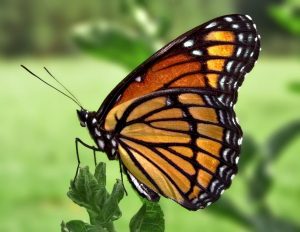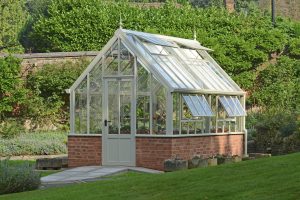During September, the indoor team will be potting up spring bulbs in the nursery to be used in the Mediterranean House next spring. Hyacinths will be planted in 13cm half pots, 3 bulbs to a pot, each with their noses proud of the compost so that they don’t rot. Daffodils will be planted in 18cm pots, 7 bulbs to a pot. These are planted in two layers: three in the bottom layer and once covered with compost, a second layer of 4 bulbs is added to give a fuller display per pot. Once potted up, the Hyacinths and Narcissus will be placed outside in a north facing, dark covered cold frame until late winter. The cold and dark is needed to initiate good root growth.
The Alpine House is up and running with a changing display of flowering cyclamen. Look out for Cyclamen hederifolium ‘Stargazer’ it has pure white flowers that are upturned – looking at the stars.
At this time of year, you cannot get a better plant than cyclamen hederifolium. It is as ‘tough as old boots’, hardy down to minus 25°C, has flowers before its leaves so they show up well and can cope with dry shade under bushes.
Our hedges will continue to be trimmed, early autumn is prefect for trimming yew (taxus baccata). We will also be finishing the conifer hedges, before it gets too cold.
The second part of the Herbaceous Border is now clear of weeds, and the plants are due for delivery in September. If they look good we will start planting whilst there is some warmth and moisture in the soil. Otherwise we will keep them in the nursery, get them growing early spring and plant out later.
We still have some colourful heucheras in the Nursery and they will be planted out as ground cover around the Gardens. There has been a lot of interest in these ‘coral flowers’ over the last few years and we have selected about eight different cultivars and they are adding interest to many of the shrub beds, see them on the American Bank and in the Grass Garden. Go and look at the H. ‘Paprika’, H. ‘Citronelle’, and the H. ‘Caramel’ certainly names to make you whet your appetite.
We are still repairing the lawns from our events this summer, topsoil is being spread to fill in the ruts, on the West lawn, and now the grass seed has an excellent chance of success. Towards the end on the month we will be having contractors on site to de-compact the soil, spread fertiliser and overseed. This will involve large machinery and the Main Lawn will be out of bounds whilst this work is carried out. It will only be closed for a couple of days and then the grass sward should recover for next year, and be a perfect backdrop for our many events.
The new play equipment in the Treetops Playground is proving to be very popular. The little houses are perfect for picnicking in, and the cradle swing is very popular with whole groups of children. We have got a small area of the playground fenced off to allow the newly seeded grass to grow, as soon as it has been cut a couple of times this area will be opened up.
If you saw the hardy geraniums on the Azalea Bank after they had been cut back about six weeks ago, you should see them now! There is plenty of fresh green growth on the plants, helping keep the weeds down and acting as a foil for both the cyclamen and the colchicums that are in full flower.
Towards the end of September, the summer bedding will be replaced with the winter bedding. We are planting up the summer cacti bed with pansies this year. We had to stop using pansies as we had a disfiguring fungal disease on them about eight years ago. The fungal spores should have died out by now and we are planting in gravel so again this should help keep the foliage drier, and problem free. We are also planting through the bedding with tulips.
Finally, we will be starting to clear up fallen leaves and using our new machine that will help lift the piles of leaves and put them in the trailer. Autumn seems to be starting earlier and earlier, hopefully, there will still be some leaves around on the trees as we are having a tree survey carried out into the health of the tree collection.



